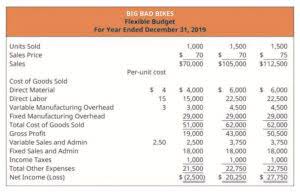
This shows the importance of using CAE to improve competitive issues in institutions and create value within an institution or even within the health sector. Most studies in this network are focused on methods of economic evaluation in health or CEA procedures. As they are reference works of this sampling, it is possible to consider these studies as basic and fundamental to the development of the logic of this subject. Provides data relevant to cost–benefit analyses that were extracted from the 30 government documents that were reviewed but were not the main guidance document used to formulate the recommendations. On the other hand, whether a budget constraint has been specified (or not) does not limit the use of CBA in any way.
- For these organizations, any efforts to implement an effective cost analytics strategy necessarily must begin with developing an understanding of resource utilization by service center, cost per patient/service, and the variance of physician practices.
- For sensitivity analyses using the health sector perspective, a wide range of QALY/DALY values should be used.
- Analysis of the centrality of the institutional link of the studies shows the relevance of the University of London, presenting a total of 593 published studies, followed by Harvard, with 538, and the University of California System, with 345.
- Economic theory suggests that the appropriate time horizon is the economic life of the project and should be long enough to capture important differences in costs and benefits between options and the base case (comparator) [45, 46].
- Based on the most contemporary Australian data, the authors recommended a VSL of A$ 7 million and a VSLY of A$ 303,531 (in 2017 values), with additional values for sensitivity analyses [76].
- More generally, the problem with CEA was that even when funds were available, and an intervention was found to be the most cost-effective one, one still had not accumulated enough evidence to conclude that this low-cost intervention should be approved.
In this analysis, costs are measured in monetary value and the effects of treatment in natural effectiveness units, such as years of life gained or improved functional status (Secoli et al., 2010), or even, improving access to health care (Loesch et al., 2021). This article is presented as a fundamental part in the construction of applied research to analyze cost-effectiveness in health sector, corroborated, at this stage, by the theoretical understanding of the theme CEA. Mirrored in the experience https://www.bookstime.com/articles/daycare-accounting of (Secoli et al., 2010), this search was conducted via the Web of Science database. In the survey, the descriptors were used in combination with suitable Boolean operators to obtain accurate data according to the needs. The time interval considered was from 1977 to 2020, resulting in a sample of 7972 studies delimited in the articles category (Table 1). The need to develop alternatives to improve health assistance access and qualification was emergent and urgent even before the advent of Covid-19.
How can information from a CEA be useful for decision makers?
However, if the net costs are negative (which means a more effective intervention is less costly), the results are reported as net cost savings. A new methodology is needed to accurately measure activities, resources, and cost objects (e.g., patient episodes of care and specific services delivered) what is a cost benefit analysis so that revenues and expenses can be determined based on resources consumed and actions taken to deliver care for each patient across the continuum of care. Benefit-cost analysis estimates the positive and negative impacts of a policy, clarifying the trade-offs implicit in the policy decision.

Using highly individualized data to estimate productivity impacts may have adverse equity impacts [46], and therefore average gender-free wage rates should be used. Optional additional analyses using more individualized data could be undertaken; however, a full discussion of the distributional impact of the analyses should be included. Logic models should be developed to identify all potential impacts (economic, social and environmental) of the preventive health intervention.
